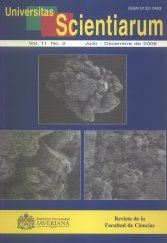Abstract
Las inmunodeficiencias primarias son un grupo heterogéneo de desórdenes hereditarios que afectan los mecanismos de la inmunidad inespecífica y específica del huésped. En la mayoría de los casos se manifiestan en los primeros cinco años de vida, pero pueden presentarse a cualquier edad, encontrándose un gran predominio masculino (Oleastro, 2001). Han sido clasificadas, de acuerdo al defecto molecular que presentan, en inmunodeficiencias ligadas al cromosoma X e inmunodeficiencias autosómicas recesivas (Jones, 2000). Su prevalencia se ha establecido en 1 por cada 10.000 nacidos vivos, aumentando considerablementedesde el primer caso reportado en 1969 (Lim, 2004). Este incremento puede estar favorecidopor la existencia de pruebas especializadas de laboratorio que permiten hacer una detección temprana de anormalidades inmunológicas. La valoración de la inmunocompetencia en un individuo con sospecha de inmunodeficiencia primaria requiere de un análisis cuantitativo, cualitativo o estructural y de estudios funcionales que permiten detectar la integridad de sus mecanismos de defensa. De acuerdo con el componente inmune que se quiere evaluar existen diferentes estudios que se pueden realizar de acuerdo a su grado de complejidad en pruebas de primera, segunda y tercera etapa, las cuales serán revisadas en este artículo. (Montoya, 2004, Ortega, 2005).Univ. Sci. is registered under a Creative Commons Attribution 4.0 International Public License. Thus, this work may be reproduced, distributed, and publicly shared in digital format, as long as the names of the authors and Pontificia Universidad Javeriana are acknowledged. Others are allowed to quote, adapt, transform, auto-archive, republish, and create based on this material, for any purpose (even commercial ones), provided the authorship is duly acknowledged, a link to the original work is provided, and it is specified if changes have been made. Pontificia Universidad Javeriana does not hold the rights of published works and the authors are solely responsible for the contents of their works; they keep the moral, intellectual, privacy, and publicity rights. Approving the intervention of the work (review, copy-editing, translation, layout) and the following outreach, are granted through an use license and not through an assignment of rights. This means the journal and Pontificia Universidad Javeriana cannot be held responsible for any ethical malpractice by the authors. As a consequence of the protection granted by the use license, the journal is not required to publish recantations or modify information already published, unless the errata stems from the editorial management process. Publishing contents in this journal does not generate royalties for contributors.



